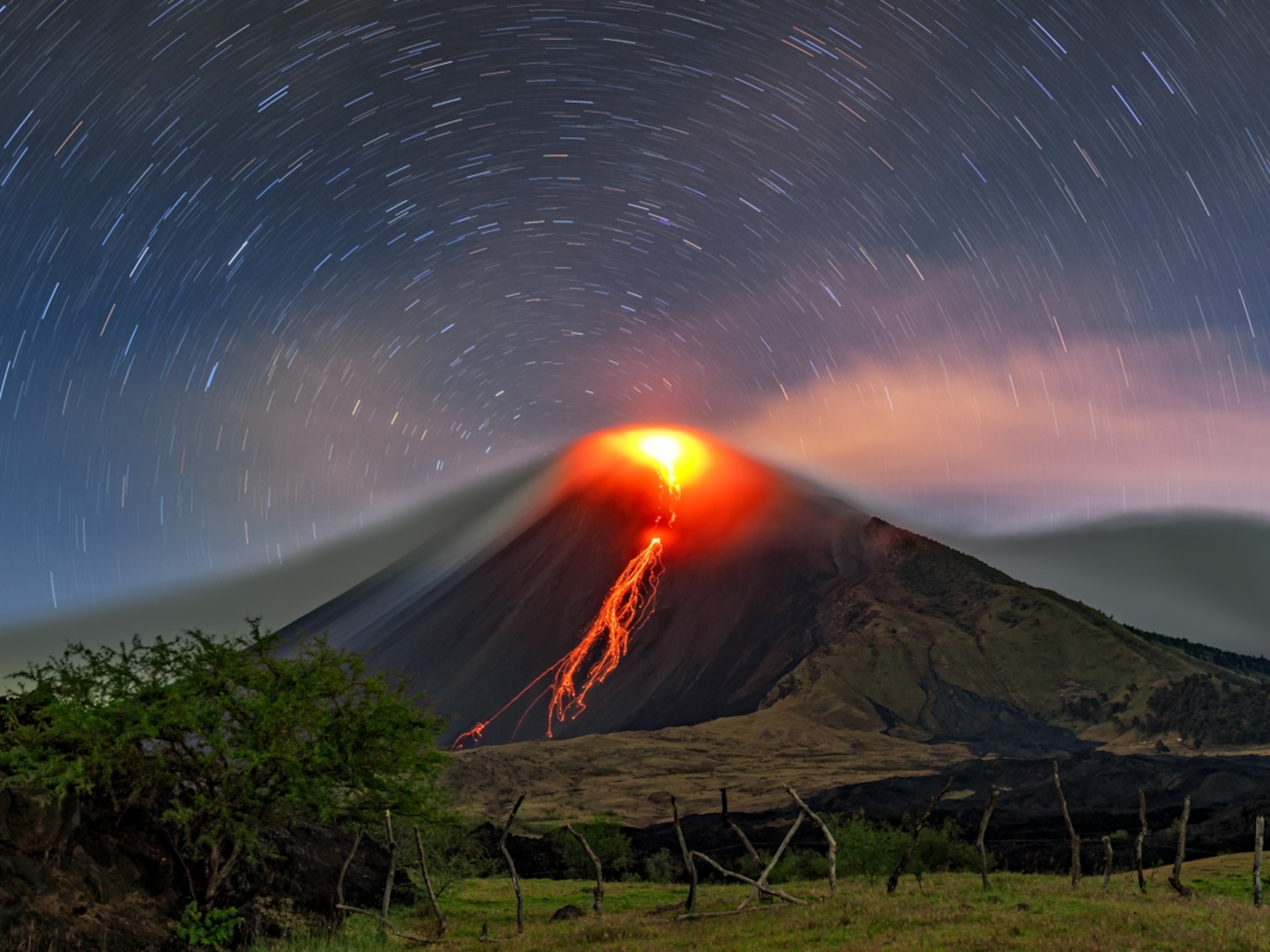
What causes a sinkhole to form?
They can be a life-threatening disaster—or a pricey nuisance. Here’s what you need to know about the depressions and holes that can form beneath our feet.
Sinkholes can be the stuff of nightmares: the ground suddenly opens up to swallow a car, a home or an entire block. But such extreme damage, formally referred to as “catastrophic ground cover collapse” in insurance parlance, is actually quite rare.
Instead, sinkholes are generally smaller depressions that may become a pricey nuisance rather than a life-threatening disaster.
What’s a sinkhole?
Sinkholes typically form when naturally acidic rainwater erodes underlying bedrock, creating damage beneath the surface. Their formation is most common in easily erodible karst terrains with carbonate rocks, like limestone or dolomite, or minerals known as evaporites, like salt and gypsum.
When groundwater seeps into cracks and then pools beneath the surface, it wears away these rocks and leads to the formation of underground caves and other openings. Soil particles fall into these gaps too, enlarging the chasms and facilitating the collection of more water.


A sinkhole forms when these chewed-up sublayers can no longer support surface sediments hovering over the void left by erosion. Usually, little or no change is noticeable from above as this destructive process is underway, which could take hundreds or thousands of years. Drought or heavy rain can exacerbate sinkhole risk, as can human activities like heavy pumping of groundwater or construction.
There are two types of sinkholes: Slow-growing cover-subsidence sinkholes are the most common, but cover-collapse sinkholes can appear in just a matter of hours and are triggered in roughly the same way as their slower-growing counterparts—collapsing when the roof of a cave becomes too thin to support the weight above.
Where do sinkholes occur?
Most reported damage from sinkholes in the U.S. occurs in Florida, Texas, Alabama, Missouri, Kentucky, Tennessee, and Pennsylvania, according to the U.S. Geological Survey. Florida is particularly known for its sinkholes since its sandy soil sits atop its Swiss cheese-like limestone.
There’s no database for sinkholes in the U.S. so there’s no comprehensive count of how many sinkholes form each year, but the Geological Survey suggests the price tag for known damage from the formations amounts to some $300 million annually. Much of that damage is to highways, other roads and buildings. Yet these costs are lower than those of other natural hazards including hurricanes, tornadoes, flooding, earthquakes and wildfires—all events that usually leave more than $1 billion of damage in their wake each year.

Florida’s Department of Environmental Protection notes sinkhole risk assessments remain challenging since expensive geophysical survey techniques or test drilling are the only ways to detect underground cavities. Rarely, sinkholes are presaged by cracks or slumping.
Other locales with known sinkholes include the Dead Sea, since salt also easily breaks down, and Mexico’s Yucatan Peninsula, which is often riddled with sinkholes due to its limestone.
What do sinkholes look like?
Sinkhole sizes vary dramatically—they can be a few feet or stretch to hundreds of acres. Their depth varies too: Some are less than one foot deep whereas others are more than 100 feet.
Sinkholes can look like shallow bowls or like a collapsed void with steep, vertical walls. When water collects in sinkholes, sometimes ponds are formed.

Sinkhole attractions
Some sinkholes have also become tourist attractions. In February 2014, for example, a sinkhole opened up overnight and swallowed classic cars at the National Corvette Museum in Bowling Green, Kentucky. No one was in the building at the time, but security cameras caught the incident on camera. The incident subsequently fueled tourism and the museum opened up a dedicated exhibit two years later.
The world’s biggest known sinkhole is China’s Xiaozhai Tiankeng which is both the deepest and largest sinkhole in the world. It’s more than 2,000-feet long and extends roughly the same distance downward. The word Tiankeng means “The Heavenly Pit.” The sinkhole’s home to more than 1,000 types of animals and plants, including the clouded leopard, according to the Chinese government, and a huge staircase has been built inside the sinkhole to help facilitate area tourism.





